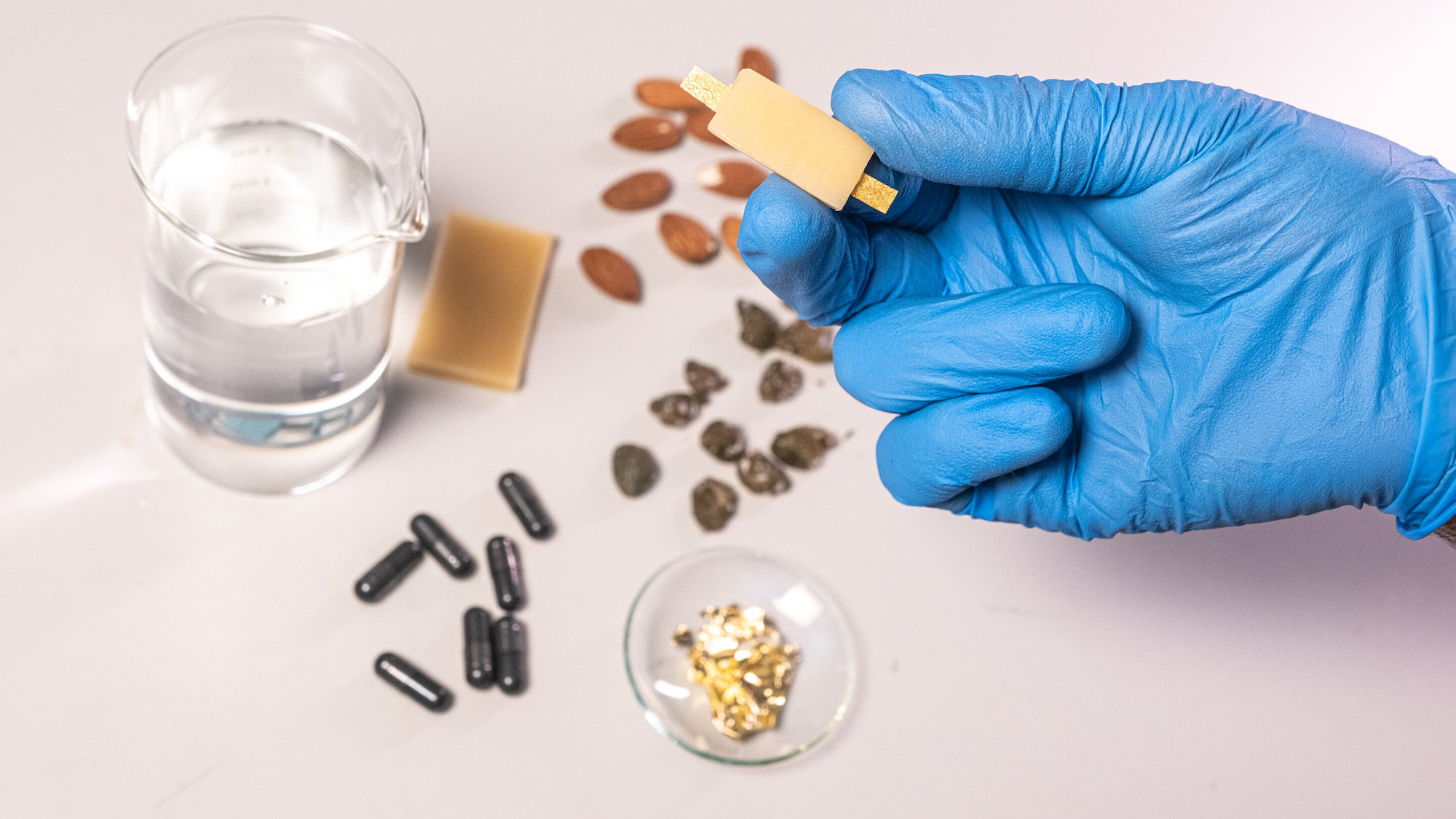

Around 3,500 Americans ingest batteries every year, according to the National Capital Poison Center. It’s apparently such a perennial issue that there’s even a specific hotline number to call in the event of such an emergency (1-800-498-8666, just in case). And while it’s unlikely your wristwatch’s power source will ever be safe to eat, that doesn’t mean all batteries will remain inedible—in fact, some are being designed with digestion specifically in mind.
A team of researchers at the Italian Institute of Technology recently unveiled what is being billed as the world’s first fully rechargeable, edible battery. As detailed in a paper published with Advanced Materials, the new device utilizes riboflavin (often found in shiitake mushrooms) as its anode and quercetin (seen in capers) as the cathode. Activated charcoal amplified the electrical conductivity alongside a water-based electrolyte. Nori seaweed—most often seen in sushi—served as the short circuit prevention separator, while beeswax-encased electrodes and food-grade gold foil contacts also contributed to the design.
[Related: MasterChef inspired an edible medical sensor.]
“Edible electronic devices will have major implications for gastrointestinal tract monitoring, therapeutics, as well as rapid food quality monitoring,” reads the paper’s abstract, adding that although recent research proved the feasibility of edible sensors and circuits, “fully edible electronic devices edible power sources are [still] required, of which there have been very few examples.”
According to the team’s findings, their proof-of-concept battery was capable of producing 0.65 volts, which is safely low enough for the human body to handle. The ingestible could provide 48 μA of current for 12 minutes, or alternatively, a few microamps for over an hour. Such a power supply could provide enough energy for small electronics akin to edible pill-shaped modules and other gastrointestinal procedure alternatives. In a statement, researcher coordinator Mario Caironi explained that such a product could help power monitors for both human health conditions and food storage. Additionally, given their safety, more powerful iterations could be utilized within children’s toys, where ingestion risk is higher.
[Related: Watch this metallic material move like the T-1000 from ‘Terminator 2’.]
In the team’s statement, co-author Ivan Ilic also explained that despite the battery’s relatively low power, its digestibility provides a promising example of a battery that doesn’t use any toxic materials. “While our edible batteries won’t power electric cars, they are proof that batteries can be made from safer materials than current Li-ion batteries,” they said, adding that “We believe they will inspire other scientists to build safer batteries for a truly sustainable future.”
Moving forward, the team is already designing future iterations featuring greater capacities at smaller sizes in the hopes of soon powering edible, soft robots for use in medical procedures.
